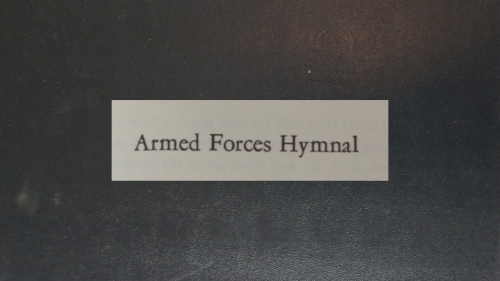
Private donations and church denominations supplied hymnals in the earliest days of the United States military. The Act of 1920, also known as the Capper Bill, called for the provision of hymnals by the government. As a result, this lineage produced the Armed Forces Hymnal of 1958.
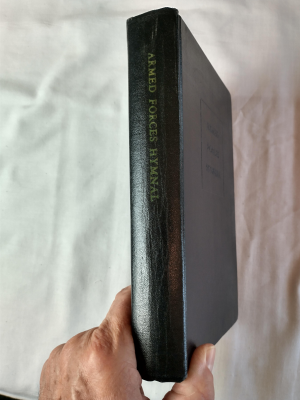
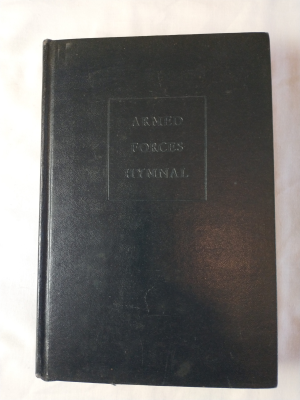

The History of the Hymnal
The establishment of the Department of Defense in 1947 created the department of the Air Force. Subsequently, chaplains shifted from the Army Air Corps to the new Air Force creating some organizational issues. From this arose the Armed Forces Chaplains Board in 1949.
As the Korean conflict neared its end, it became apparent that the hymnals needed to be reprinted or revised. However, the Armed Forces Chaplains board chose to explore the creation of a new hymnal. So they formed an advisory group. The Armed Forces Hymnal resulted from this exploration. Therefore, it was the first hymnal created by the combined chaplains of all three branches of service.
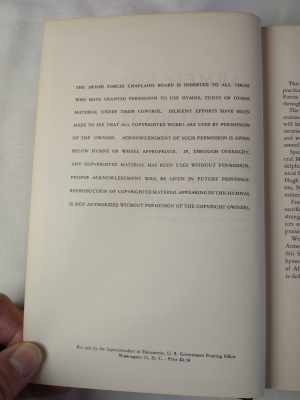
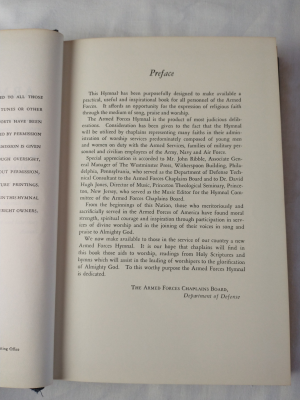
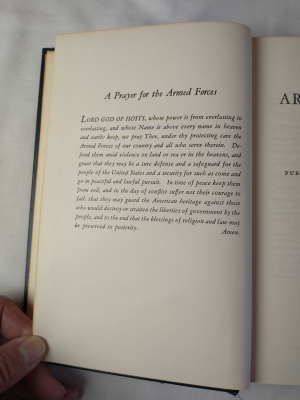
The Sections of the Armed Forces Hymnal
The hymnal itself contains 3 distinct sections: Catholic, Jewish, and Protestant. Consequently, each section has it’s own table of contents. (An unfortunate footnote of this arrangement: the Orthodox tradition was not included in the deliberations for this hymnal. The hymnal that followed corrected this omission.)
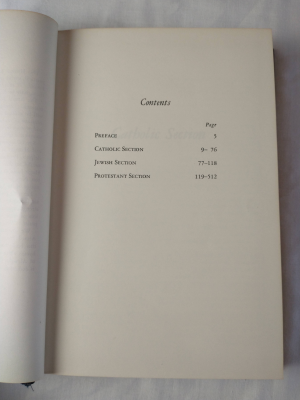
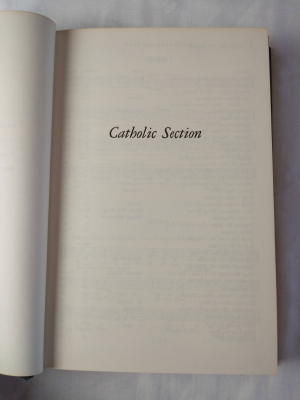
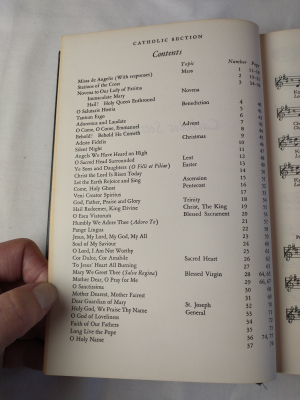
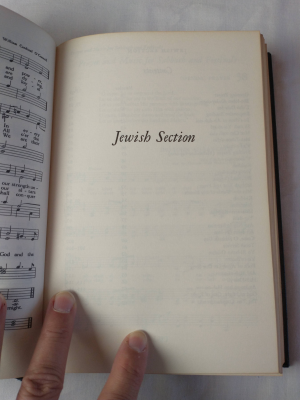
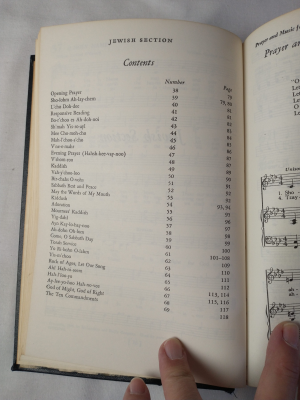
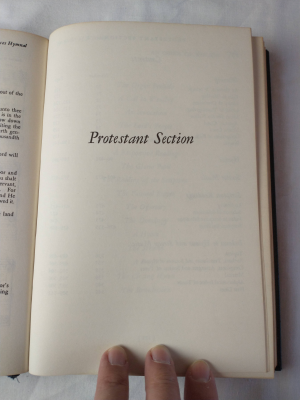
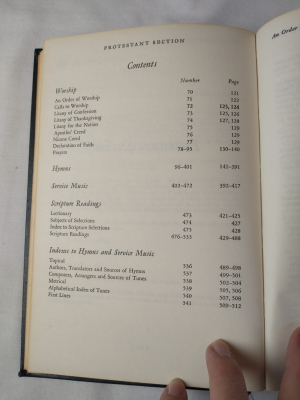
The Protestant section dominates the hymnal. However, many of these hymns are useful to Catholics as well.
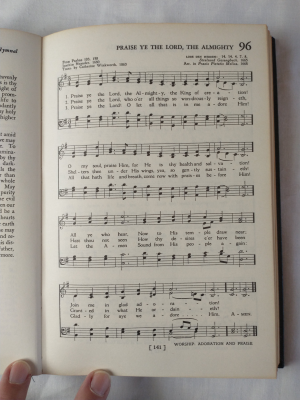
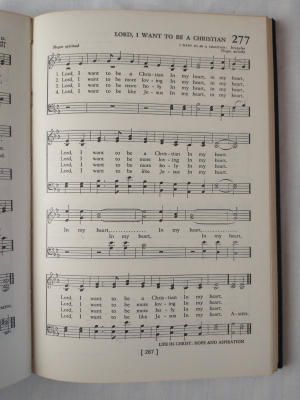

The Catholic section contains a few hymns also sung by Protestants. However, it is primarily devoted to songs and readings more closely associated with Catholic theology and worship.
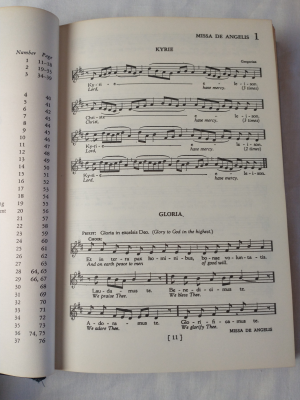

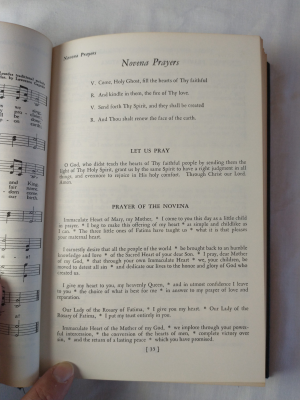
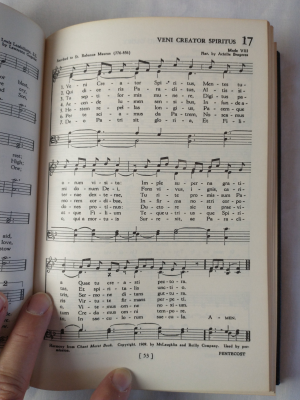
The Jewish section contains those readings and songs that are distinctively from their worship traditions. I noticed that the Jewish Section ended with the Ten Commandments from Exodus 20:1-17.
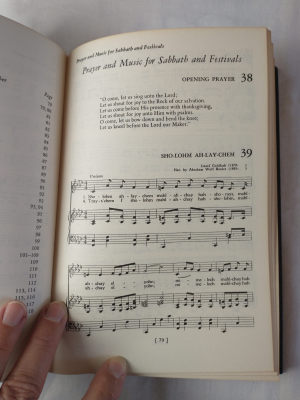
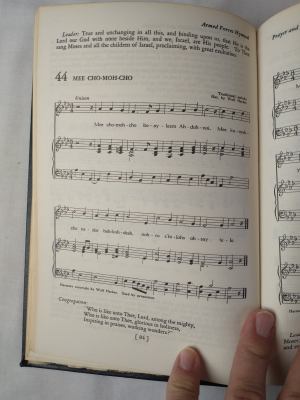
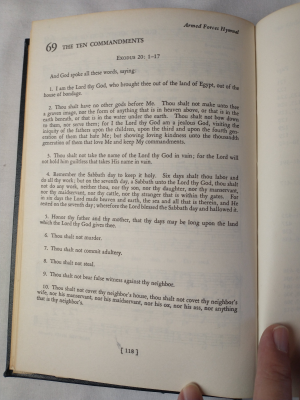
The Protestant Section opens with an order of worship and readings appropriate to those services.
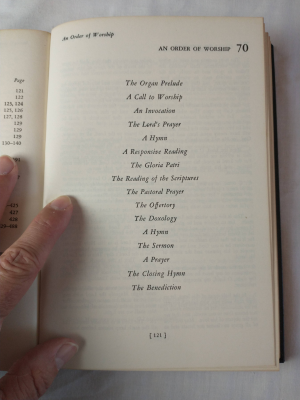
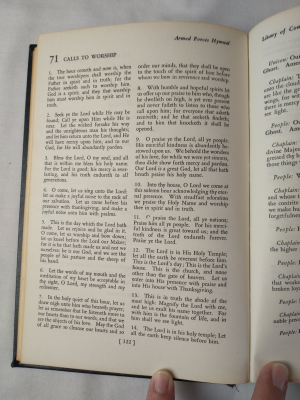
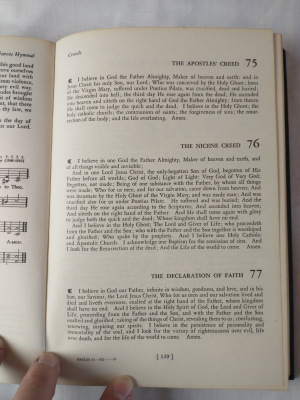
After a large selection of hymns, this section closes with several pieces of service music.
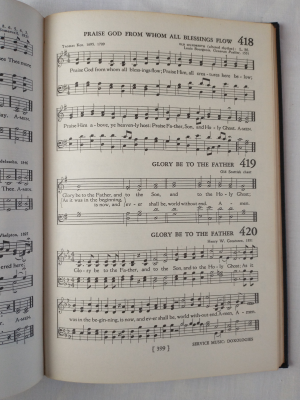
A lectionary and scripture responsive readings follow the musical selections.
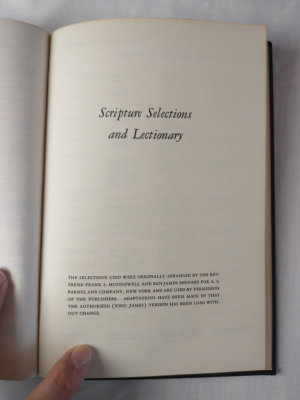
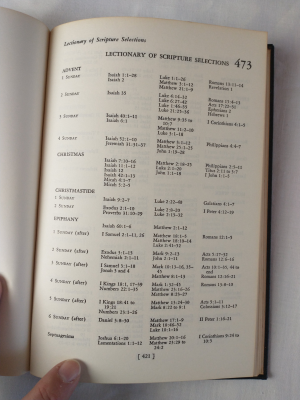
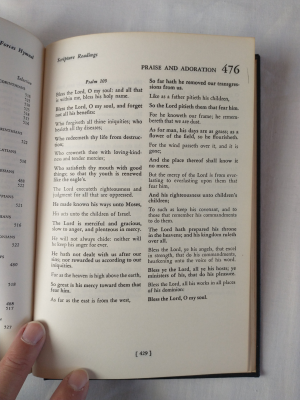
The Indices of the Armed Forces Hymnal
Finally, the Armed Forces Hymnal includes an impressive set of indices. Two of these belong with the readings: Subjects of Scripture Selections and Index to Scripture Selections. At the end of the hymnal we find the following:
- the Topical Index,
- the Index of Authors, Translators, and Sources,
- the Index of Composers, Arrangers, and Sources,
- the Metrical Index of Tunes,
- the Alphabetical Index of Tunes, and
- the Index of First Lines.
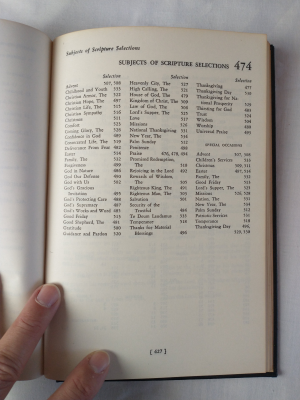
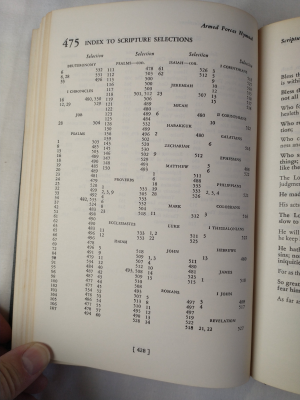
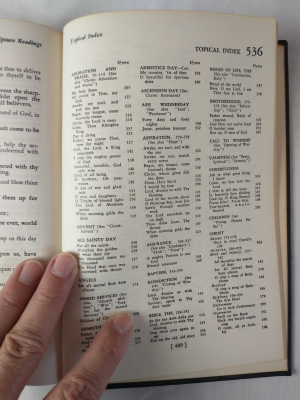

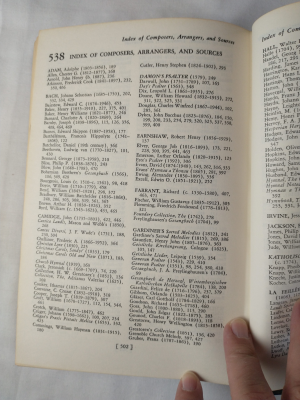
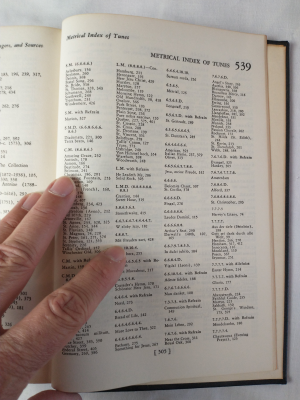

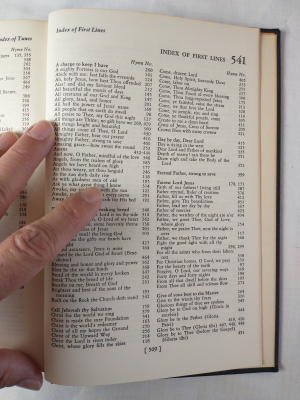
In Closing
Certainly, we express our gratitude to the men and women of the United States military for their service. Our gratitude extends also to the government for providing worship resources to those who worship in the Christian and Jewish traditions.
I want to express my appreciation to Gary W. Carr for his thesis, The Development of the Book of Worship for the United States Forces. This paper was the primary resource for this article. Mr. Carr presented it in partial fulfillment of requirements for the Master of Theology Degree in the Divinity School of Duke University in 1996.
You can look through a copy of the Armed Forces Hymnal at the Open Library. You can also see a collection of books of worship at The Chaplain Kit.
Blessings,
Richard
